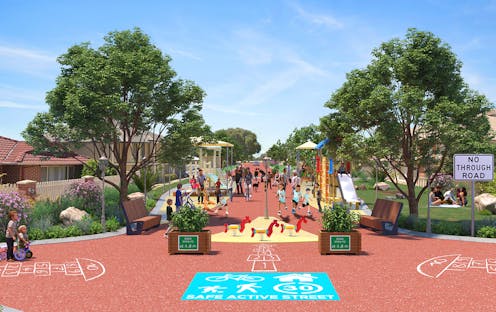Cars have taken over our neighbourhoods. Kid-friendly superblocks are a way for residents to reclaim their streets
- Written by Matthew Mclaughlin, Research Fellow, Telethon Kids Institute, The University of Western Australia

You might remember your time as a child playing outdoors with friends and walking to school. These activities had tremendous benefits for our health and development.
Today, parents report barriers to letting their kids play, walk and ride in their neighbourhood. The safety of local streets is a major concern.
One way to boost communities is to create “superblocks for kids”. Pioneered in cities like Barcelona, a superblock covers several neighbourhood blocks reserved for shared use by cyclists, walkers and residents who simply want to use the street space. Superblocks allow low-speed access for residents’ cars, but exclude through-traffic.
Superblocks have evolved from concepts dating back to the 1970s. Retrofitted and planned examples of more liveable and safer streets can be found from Melbourne to Perth, where there are interesting alternative designs in Willetton and Crestwood.
Transforming neighbourhoods in this way enables us to once again enjoy the public space right on our doorsteps – the street.





